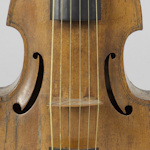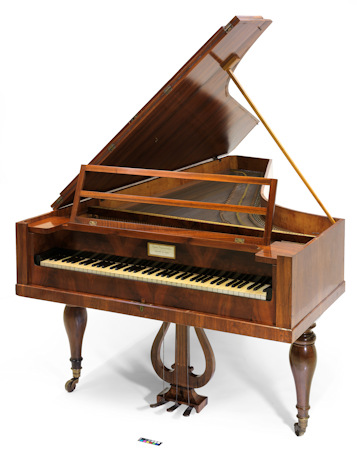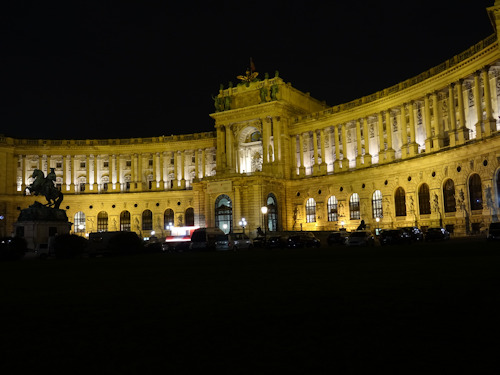
What beauty and encounters with greatness might you discover in the historical musical instrument collection inside the Weltmuseum? Here my highlights…
- Instruments played by Schubert, Brahms, Liszt, Mahler, Strauss, and others
- Many items with their own fascination, regardless of provenance
- Book a classical concert experience* for your Vienna trip
- See also:
Touched by genius

(Illustrative only. A fortepiano from 1825–1845, manufactured by Ignaz Bösendorfer and fomerly owned by the famous writer and friend of Beethoven, Franz Grillparzer; Wien Museum Inv.-Nr. Grillparzer 131; reproduced under the terms of the CC BY 4.0 license; photo by Birgit and Peter Kainz, Wien Museum)
I will never cease to marvel at being able to stand next to instruments that great composers once played.
Such items seems to grant an almost physical connection to historical figures of the past. Just like when you look out the same window Mozart did. Or see the car carrying Franz Ferdinand to his 1914 assassination.
On my last visit to the collection of historical instruments, for example, the public displays included:
- A violin that once belonged to Leopold Mozart (Wolfgang Amadeus’s dad and an accomplished musician in his own right)
- A square piano from c. 1820 that Schubert used when composing
- An 1839 grand piano that once felt the touch of Brahms

(Kapellmeister Margold and five musicians from a salon ensemble photographed by the Baldi & Würthle photo studio, possibly around 1860–1870; Wien Museum Inv.-Nr. 72823/4; excerpt reproduced with permission under the terms of the CC0 licence)
- The 1862 Érard piano used by Franz Liszt for compositions, lessons and private concerts while in Rome
- The 1868 grand piano performed on by Clara Schumann at the inaugural concert in the Brahms-Saal of the famous Musikverein
- A grand piano from the apartment of piano manufacturer Michael Schweighofer that Johann Strauss II used to play. (And here’s a fascinating fact: I think Michael is the brother of Carl Schweighofer, whose grave features in the official video to Ultravox’s hit single Vienna)
- A 1902 piano owned by Mahler
- A 1950 zither once played by Anton Karas of The Third Man theme tune fame (the Third Man Museum has the zither used for the actual film music)
Even if you ignore any renowned former owners and players, certain instruments impressed me entirely through their design. Especially those predating the eras of such famous composers. For example:
- Dual purpose instruments, such as a glorious 17th-century lacquered and mosaiced cabinet with a built-in keyboard. Or a table inlaid with ebony and ivory that turns out to be a pipe organ
- Gorgeous harps from the 1700s with golden scrolling and covered in delicate paintings
- Gilded mid-18th century trumpets used by the Hofmusikkapelle during the reign of Empress Maria Theresa
- A travelling clavichord from c. 1785, complete with quill holder for those last minute changes to the sheet music
- Late 18th century fortepianos: the kind that Jane Austen’s heroines (or Jane Austen herself) might have played on
- A Bösendorfer grand piano built in the 1860s for the Paris World Fair. Imagine an opulent salon in a majestic palace. Now imagine that salon in the form of a grand piano: all neoclassical wood inlays, decorated scrollwork, and gilded female figures

(The Neue Burg home to the collection: suitably magnificent)
Nor do the collection highlights limit themselves to instruments. Works of art add another component to the displays.
So I found, for example, a coloured wax bust of Joseph Haydn: created while he was still alive in around 1800. And an 1898 bust of Brahms by Ilse Conrat, who also designed the composer’s gravestone. Not to mention portraits of Beethoven (1823) and Schubert (1814).
And, finally, as with many museums in Vienna, the galleries themselves possess their own intrinsic worth.
The room at the centre of the collection, for example, has marble columns, stucco decoration and ceiling paintings. I believe it also hosts very occasional morning concerts.
Concerts in historical surrounds is a big deal in Vienna. If you’re interested, I have some suggestions for an evening of light classical music in churches, palaces and other such locations carrying echoes of the past.